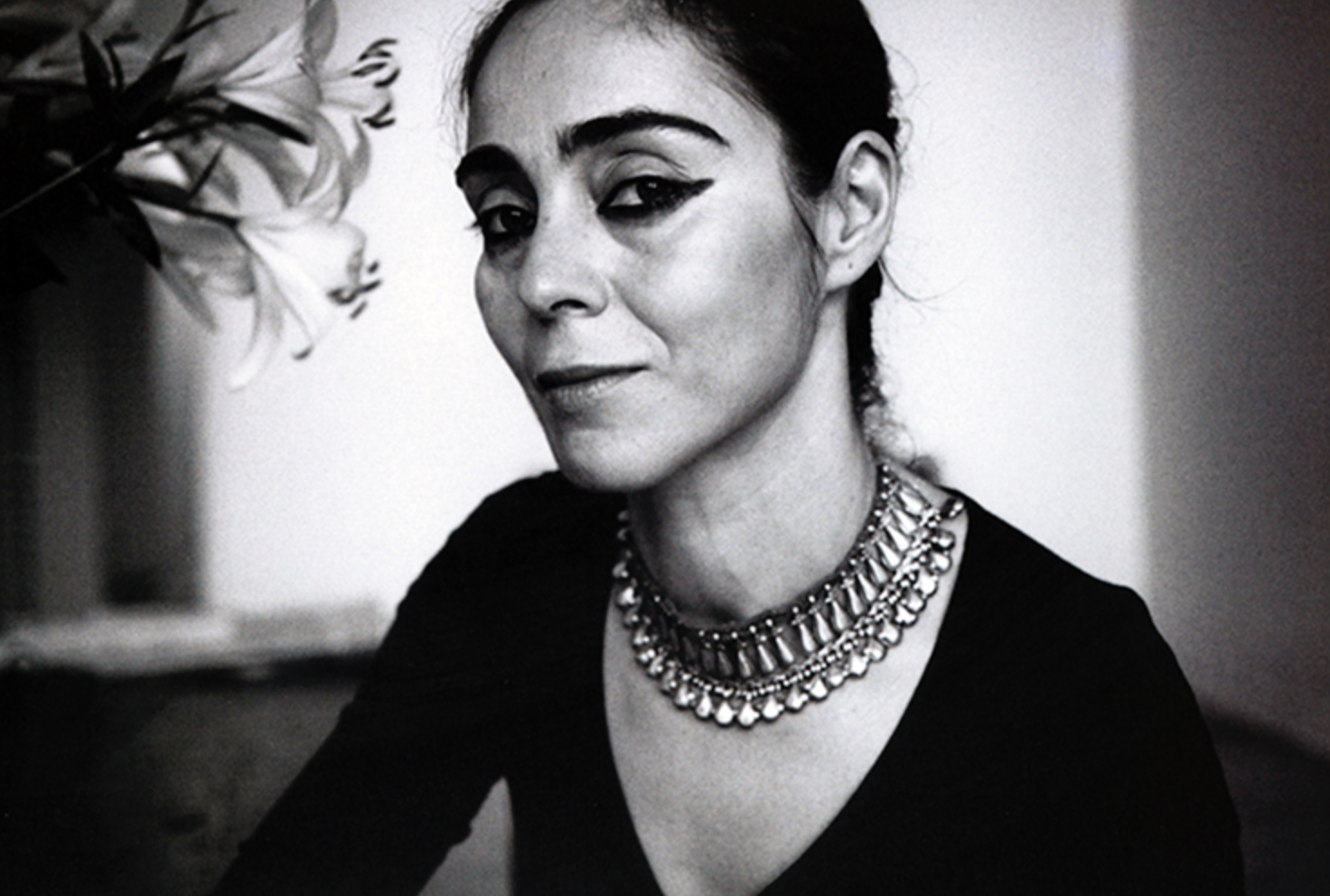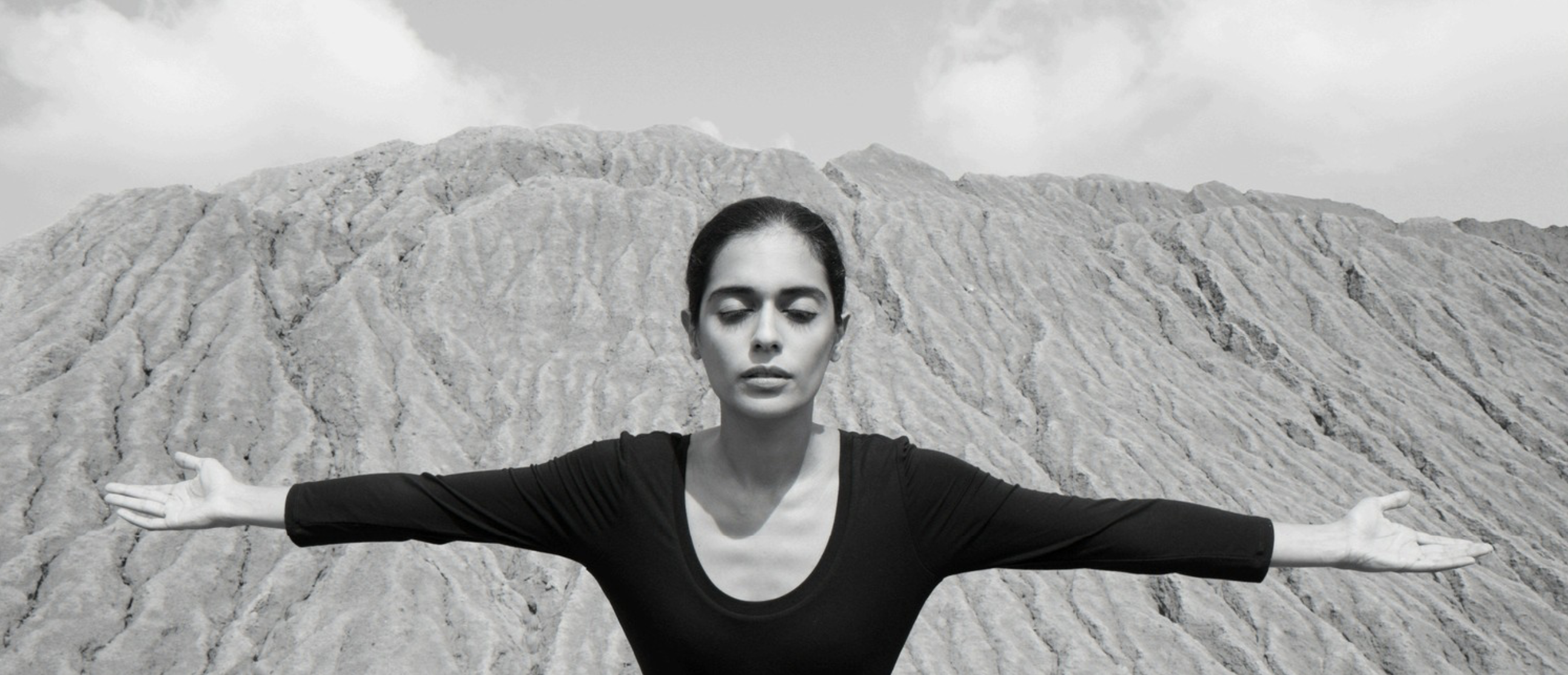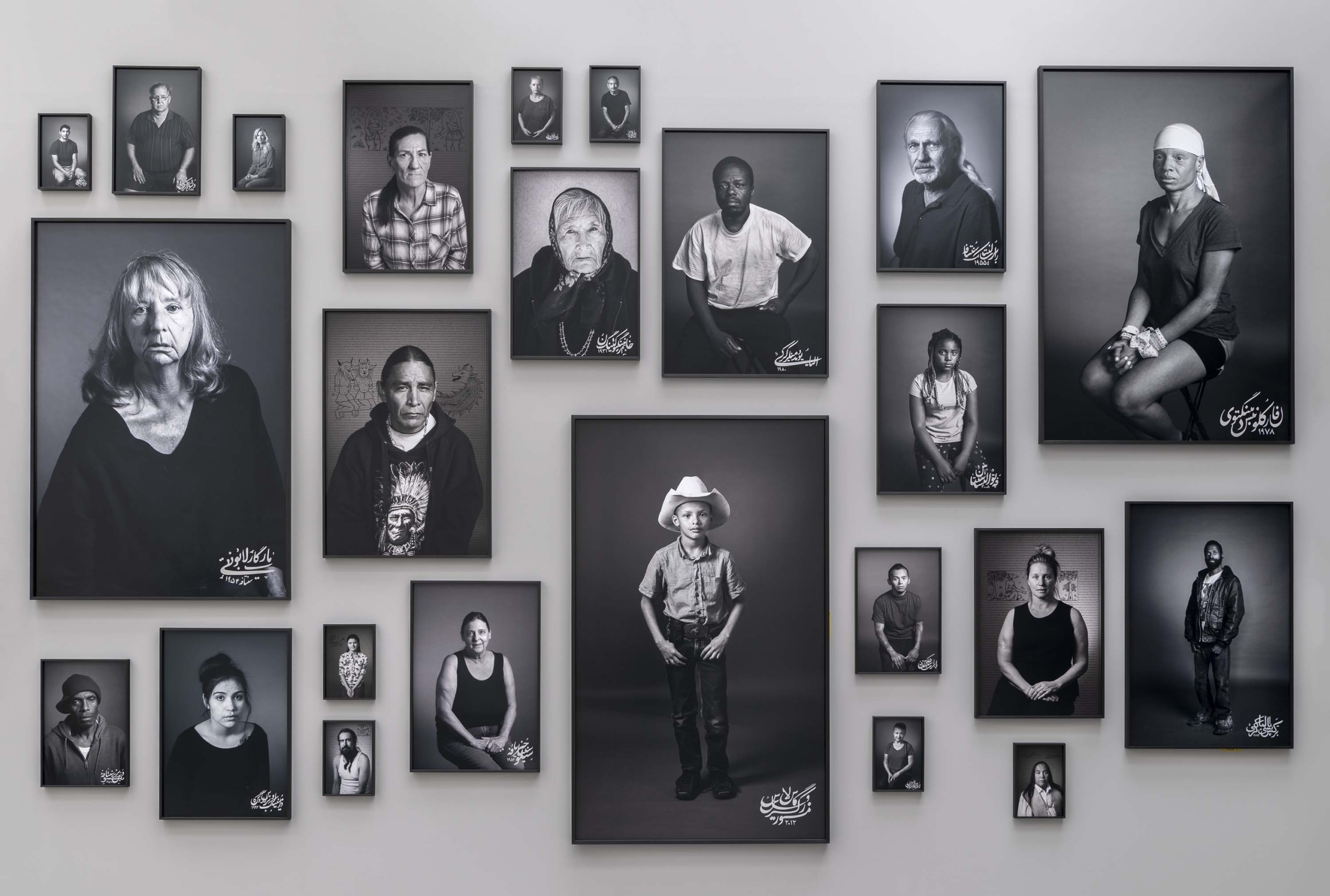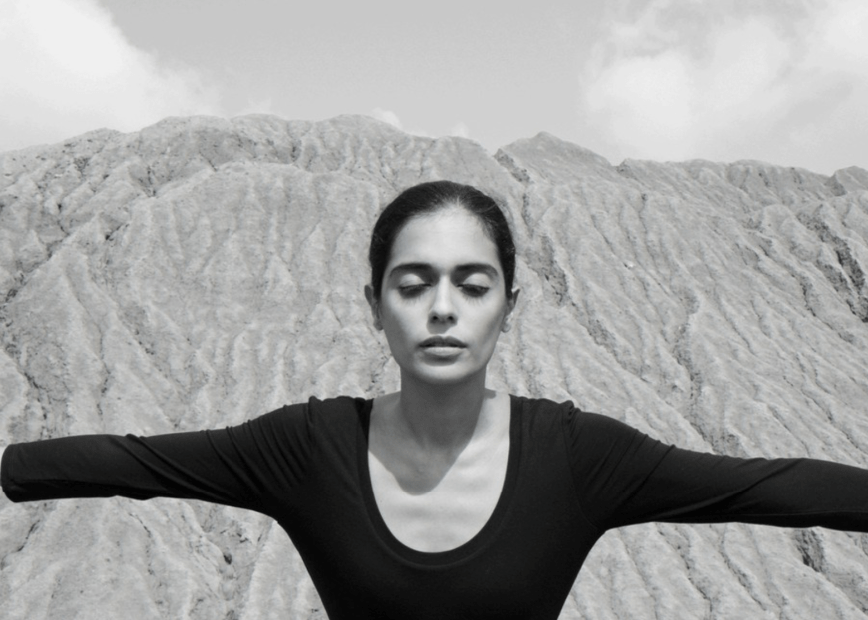Iranian-born New York City resident Shirin Neshat is a visual artist best recognized for her work in photography, and film. Prior to the Iranian Islamic Revolution in 1974, Neshat traveled to Los Angeles to pursue her art studies. Upon arriving back in Iran in the 90’s Neshat took photographs of herself while wearing the chador, or veil, a religious garment mandated by Islamic Sharia in 1983. Neshat’s work largely probes the physical, psychological, and cultural well-being of veiled women in Iran. Through her images, Neshat effectively acknowledges the existence of women in a society where men predominate. Her photographs and films transform the female gaze into a potent and lethal tool for communication.
Currently on display at the Museum of Contemporary Art in Toronto, four bodies of art are featured in the exhibition: Roja (2016), Land of Dreams (2019), Women of Allah (1993–1997), and Rapture (1999).

Roja (2016)
Roja, inspired by one of Neshat’s personal dreams, is one of a trilogy of video installations called Dreamers. It includes scenes with sombre undertones portraying eradication and solitary isolation brought on by Neshat’s decision to stay in exile since 1996. The artist’s latest study into dreams and a more surrealist approach to sociopolitical manifestations and interactions were expressed through the film. Neshat comments: “I have been haunted by the power of dreams for years”, and “I am fascinated by how in a state of dream, the boundaries between madness and sanity, reality and fiction, conscious and subconscious are blurred and broken”.

Land of Dreams (2019)
The themes highlighted in the Land of dreams are global migration, displacement, and geopolitical warfare. Neshat traveled across the entire state of New Mexico in 2019 for this extensive piece, stopping in different cities and communities to photograph individuals, asking them to each recall a recent dream they encountered. The outcome resulted in a collection of 111 portraits, much of which with Farsi inscriptions and graphics that indicate the individual’s name, birthplace, and birthdate. Neshat’s alter ego, Simin, an Iranian woman, is followed in a two-channel video installation, which was also produced in New Mexico, as she travels to a small American town to take photographs of the locals and document their dreams. Simin, who is passing for an art student, uses a similar tactic to Neshat.
Simin then ventures back to The Colony, a mysterious Iranian organization hidden inside a mountain where the members are assigned to collecting, choosing, and understanding dreams from American citizens. Political and cultural barriers start to vanish as one hears the interviewees’ aspirations and concerns, which are remarkably similar to Simin’s own.
As the story progresses, we find out that Simin works for a government organization that analyzes people’s dreams in order to better understand and manage the population. Simin works for an Iranian organization in the video installation, but also for Americans in the feature film. Neshat purposefully exploits the long-standing political hostility between Iran and the United States in his decision-making.

Women of Allah (1993–1997)
Neshat’s first piece, Woman of Allah, spans the years 1993 to 1997, combining images of women with passages from the Qur’an. Neshat examined cultural taboos further using film and video installations.
In the midst of an evolving cultural environment in the Middle East, Shirin Neshat’s visual series Women of Allah explores the complexities of women’s identities, both through the perspective of Western depictions of Muslim women and through the more private subject of personal and religious conviction.
While the composition appears austere, precise, and symmetrical—defined by the sharp edge of her black chador against the dazzling white background—the split caused by the weapon conveys a more dramatic rupture or emotional fragmentation. It implies that a single subject could contain both internal contradictions and dichotomies like tradition and modernity, East and West, beauty and brutality. In Neshat’s words: “every image, every woman’s submissive gaze, suggests a far more complex and paradoxical reality behind the surface.”

Rapture (1999)
In Rapture, two synchronized black-and-white video sequences are projected on opposing walls which resemble movie screens. The artist creates two concurrent narratives with hours of footage and a team of editors: on one side of the room, men fill an architectural setting; in the other segment, women move inside a natural one. The composition opens with depictions of an inhospitable desert and a stone fortress, respectively. The citadel vanishes into a scene of more than a hundred identically dressed men, plain white shirts, and black pants, racing through an old city’s cobblestone streets and through the fortress’s gates.
A shot of an apparent equal number of ladies appearing from multiple locations in the desolate landscape while wearing flowing, full-length veils, or chadors, is cut off in the middle of the desert scene.
As the film goes on, the men occupy themselves with a range of routine, occasionally ludicrous activities that go against the purpose for which the area was designed. After making their journey across the dunes and to the other side of the installation, the women chant, pray, and subsequently throw a boat into the water with six of their own people onboard. In Rapture, Neshat self-consciously exploits ingrained stereotypes about gender and space, such as the association between man: rationalized, and organized culture while woman, irrational, with wild nature. The audience is actually placed between two polar opposite worlds in the video installation, which is essentially a study of gendered group dynamics.
The psychological state of exile, which is rootless and restless, is poignantly reflected in Rapture. Neshat maintains a critical distance as an Iranian immigrant to the United States, which has helped her pinpoint the poetics and strength of the veil. She acknowledges the beauty and strength of Islamic women while also emphasizing the evils of oppression.


Tala is an Editorial Intern at Liminul. She’s a creative writer/director, graphic designer, and event coordinated based in Toronto. Tala is a third year student majoring in Fashion Communications at X University.

